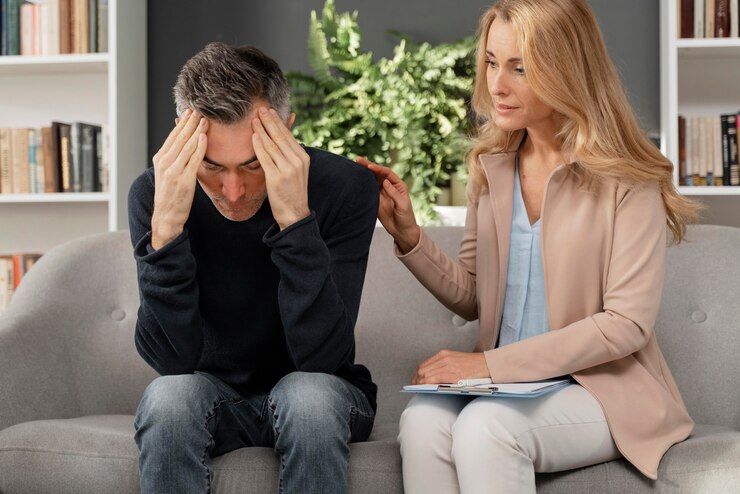The Myths and Facts About Phobia: How to Educate Yourself and Others
Understanding Phobias: Debunking Common Misconceptions

Phobias are a common psychological condition that affects millions of people worldwide. Despite their prevalence, there are several misconceptions surrounding phobias that perpetuate misunderstanding and stigma. In this section, we will debunk some of the most common misconceptions about phobias, providing accurate information to help foster a better understanding of this condition.
One common misconception about phobias is that they are simply a fear that can be easily overcome. However, phobias are much more than just minor fears; they are persistent and irrational fears that can significantly impact an individual’s daily life. Unlike normal fears, which may arise in response to a genuine threat, phobias are characterized by extreme and disproportionate fear responses to specific objects, situations, or environments. This heightened fear response can lead to avoidance behaviors, which can further reinforce the phobia and hinder individuals from engaging in everyday activities.
Another misconception surrounding phobias is that they are a sign of weakness or lack of willpower. However, it’s important to understand that phobias are not a choice nor a result of personal weakness. They are complex disorders that can have genetic, environmental, and trauma-related factors contributing to their development. Moreover, phobias can affect individuals of all ages, backgrounds, and walks of life, highlighting that they are not indicative of a person’s character or strength. It is crucial to approach phobias with empathy and understanding, recognizing that they are legitimate and often debilitating conditions that require support and appropriate treatment.
The Science Behind Phobias: Unraveling the Fear Response

Phobias are more than just an intense fear or aversion to a particular object, situation, or activity. They are deeply rooted in the fundamental workings of our brain and nervous system. Understanding the science behind phobias can help unravel the complex fear response that individuals with phobias experience.
At the core of the fear response lies the amygdala, a small almond-shaped structure in the brain responsible for processing emotions and triggering the body’s fight-or-flight response. When someone with a phobia encounters their specific fear, the amygdala goes into overdrive, signaling the release of stress hormones such as adrenaline. This surge of hormones activates various physiological changes, such as increased heart rate, rapid breathing, and heightened senses. These physical reactions prepare the individual to either confront the threat or flee from it.
Research has shown that phobias can be influenced by a combination of genetic, environmental, and trauma-related factors. Some studies suggest that a genetic predisposition may make certain individuals more susceptible to developing phobias. Additionally, traumatic experiences or witnessing phobic reactions in early childhood can contribute to the development of specific phobias. Environmental factors, such as upbringing and learned behaviors, can also play a role in the formation of phobias.
By delving into the science behind phobias, we gain insights into the intricate workings of our brain’s fear response system. Understanding the underlying mechanisms can help individuals with phobias and their loved ones to approach treatment in a more informed and empathetic manner. The next time we come face to face with someone battling a phobia, let us remember that their fear response is not something they have complete control over. It is a deeply ingrained response that requires understanding, support, and evidence-based interventions to overcome.
Types of Phobias: Exploring Specific and Social Anxiety Disorders

Phobias are classified into various types, each with its own unique characteristics and triggers. Two common types of phobias are specific phobias and social anxiety disorders.
Specific phobias are characterized by a profound and irrational fear of a specific object, situation, or activity. It could be anything from heights and spiders to flying or even deep water. The fear is often excessive and can cause individuals to avoid the trigger at all costs. For example, someone with a specific phobia of flying may refuse to board an airplane, even if it means missing out on important events or opportunities. These phobias can be highly debilitating and may significantly impact one’s daily life and overall well-being.
On the other hand, social anxiety disorders are marked by an intense fear of social situations and interactions. Individuals with social anxiety often experience extreme self-consciousness and fear being judged, humiliated, or embarrassed by others. This fear can be so overwhelming that it leads to avoidance of social gatherings, public speaking, or even simple activities like eating in front of others. Social anxiety disorders can severely impact an individual’s relationships, career, academic performance, and overall mental health.
It is important to note that both specific phobias and social anxiety disorders are legitimate mental health conditions that require understanding and support. These phobias are not merely a result of weakness or personal flaws. By recognizing and understanding the different types of phobias, we can strive to create a more inclusive and empathetic society for those who struggle with these challenging conditions.
Myths About Phobias: Dispelling Misunderstandings and Stereotypes
Phobias, despite being relatively common, are often misunderstood and surrounded by misconceptions. These misconceptions can lead to stigma and hinder individuals from seeking the help and understanding they need. It is crucial to debunk these myths and stereotypes surrounding phobias to promote empathy and create awareness.
One prevailing myth about phobias is that they are simply a result of irrational thinking or weak willpower. However, phobias are not merely a matter of choice or mindset. They are actually complex anxiety disorders that involve a deep-seated fear and anxiety towards specific objects, situations, or social interactions. Research suggests that phobias may have a neurobiological basis, with a combination of genetic, environmental, and traumatic factors playing a role in their development.
Another common misconception is that individuals with phobias can easily overcome their fears through exposure or by “just facing their fears.” While exposure therapy can be an effective treatment approach, it is important to recognize that overcoming a phobia is not a one-size-fits-all process. Each individual’s experience with phobias is unique, and the severity of the fear response can vary widely. Professional guidance, support, and therapy may be necessary to help individuals navigate their phobias and develop coping strategies that work best for them.
Recognizing the Symptoms: How Phobias Manifest in Individuals
Phobias are complex mental health conditions that can have a profound impact on individuals’ lives. Recognizing the symptoms of phobias is crucial in order to seek appropriate help and support. The manifestation of phobias in individuals can vary greatly, but there are common signs to watch out for.
One of the most prominent symptoms of phobias is an overwhelming and irrational fear. This fear is often specific to a particular object, situation, or activity. For example, individuals with arachnophobia have an intense and uncontrollable fear of spiders, while those with agoraphobia may experience extreme anxiety in crowded places or open spaces. This fear is disproportionate to the actual danger posed by the phobia’s trigger, and individuals may go to great lengths to avoid encountering it.
Physical symptoms can also manifest in individuals with phobias. These can include rapid heartbeat, shortness of breath, trembling, sweating, nausea, and dizziness. These physical manifestations are a direct result of the body’s fight-or-flight response being activated in response to the perceived threat of the phobia. These symptoms can be distressing and may lead to further avoidance behavior in order to prevent their occurrence.
It’s important to note that individuals with phobias may experience these symptoms to varying degrees. While some individuals may only experience mild discomfort, others may have severe panic attacks that significantly interfere with their daily lives. Recognizing the symptoms of phobias is the first step towards understanding and addressing these challenges.
Certainly! Here’s information on how phobias manifest in individuals, focusing on recognizing the symptoms, presented in a table format:
| Recognizing the Symptoms: How Phobias Manifest in Individuals | Key Symptoms and Manifestations | Implications and Considerations |
|---|---|---|
| Intense and Irrational Fear | – Immediate Anxiety: Experiencing intense fear or anxiety when confronted with a specific stimulus. | – Disproportionate Response: The level of fear is excessive compared to the actual threat posed by the stimulus. |
| – Avoidance Behavior: Taking extreme measures to avoid the feared object, situation, or activity. | – Impact on Daily Life: Avoidance can significantly impact daily routines, limiting activities and opportunities. | |
| Physical Symptoms of Anxiety | – Increased Heart Rate: Experiencing a rapid heartbeat or palpitations in response to the phobic stimulus. | – Fight-or-Flight Response: Physical symptoms are part of the body’s natural response to perceived threats. |
| – Sweating and Trembling: Physiological responses such as sweating, trembling, or shaking may occur. | – Automatic Response: These symptoms are automatic and may not be under conscious control. | |
| Cognitive and Emotional Reactions | – Thoughts of Dread or Doom: Persistent thoughts of impending danger or catastrophic outcomes related to the phobia. | – Cognitive Distortions: Phobias often involve irrational thoughts and cognitive distortions. |
| – Panic Attacks: Some individuals may experience panic attacks when exposed to the phobic stimulus. | – Prolonged Anxiety: Panic attacks can heighten overall anxiety levels and contribute to avoidance behaviors. | |
| Behavioral Responses | – Avoidance Strategies: Developing elaborate strategies to avoid encountering the phobic stimulus. | – Impact on Relationships: Avoidance behaviors can affect relationships and social activities. |
| – Seeking Constant Reassurance: Frequently seeking reassurance from others about the perceived threat. | – Dependency: Relying on reassurance may lead to dependency on others for managing anxiety. | |
| Impact on Quality of Life | – Social Isolation: Withdrawing from social activities or situations where the phobic stimulus might be present. | – Functional Impairment: Phobias can impair an individual’s ability to function in various aspects of life. |
| – Occupational Challenges: Difficulty in pursuing or maintaining employment due to phobia-related limitations. | – Treatment Consideration: Impact on daily life may necessitate seeking therapeutic intervention. | |
| Hypervigilance and Sensitivity | – Constant Awareness: Maintaining a high level of awareness and vigilance regarding the presence of the phobic stimulus. | – Emotional Exhaustion: Hypervigilance can lead to emotional exhaustion and heightened stress levels. |
| – Sensitivity to Cues: Reacting strongly to even subtle cues or reminders associated with the phobia. | – Impact on Concentration: Sensitivity can interfere with concentration and daily functioning. | |
| Duration and Persistence | – Long-Term Duration: The persistence of the phobia, lasting for six months or more. | – Chronic Nature: Chronic phobias may require ongoing management and intervention. |
| – Interference with Life Goals: Phobias significantly interfere with an individual’s pursuit of personal or professional goals. | – Motivation for Treatment: The impact on life goals may motivate seeking help for overcoming the phobia. | |
| Emotional Distress and Impairment | – Significant Emotional Distress: The phobia causes distress that is disproportionate to the situation. | – Quality of Life: Emotional distress can contribute to a reduced quality of life and overall well-being. |
| – Impairment in Functioning: Interference with daily functioning, leading to impaired personal and professional life. | – Motivation for Change: Recognizing the negative impact may motivate individuals to seek treatment. |
The Impact of Phobias: Exploring the Emotional and Physical Consequences
Phobias can have a profound impact on both the emotional and physical well-being of individuals who experience them. The emotional consequences of phobias can be far-reaching, often causing feelings of intense fear, anxiety, and distress. Individuals with phobias may find themselves constantly worrying about encountering their feared object or situation, which can lead to a significant reduction in their quality of life. The anticipation and avoidance of the phobic stimulus can also create a sense of isolation and social withdrawal, as individuals may feel embarrassed or ashamed of their irrational fears.
In addition to the emotional toll, phobias can also have physical consequences. When faced with their phobic trigger, individuals may experience a range of physical symptoms, including a rapid heartbeat, shortness of breath, trembling, sweating, and nausea. These physical reactions are part of the body’s fight-or-flight response, which is activated when a person perceives a threat or danger. Over time, repeated exposure to the phobic stimulus can lead to chronic stress, which can have long-term effects on an individual’s physical health. It is important to recognize the impact that phobias can have on both the emotional and physical well-being of individuals, as this understanding can help guide effective treatment approaches and support networks.
Causes of Phobias: Genetic, Environmental, and Trauma-related Factors
Phobias, characterized by overwhelming and irrational fears, can have a multitude of causes. Among these, genetic factors play a significant role in predisposing individuals to develop phobias. Research has shown that certain genetic variations can increase the likelihood of developing a phobia, as these variations affect the brain’s response to fear and anxiety. By understanding the genetic underpinnings of phobias, scientists can gain valuable insights into potential targeted treatments and interventions.
In addition to genetic factors, environmental influences also contribute to the development of phobias. Traumatic experiences, such as being attacked or witnessing a distressing event, can leave a lasting impact on one’s psyche and trigger the onset of phobias. Environmental factors, such as cultural norms, upbringing, and exposure to phobic stimuli, can also shape an individual’s fear responses. For instance, if someone grows up in an environment where spiders are consistently portrayed as dangerous or threatening, they may be more likely to develop arachnophobia, an intense fear of spiders. It is crucial to acknowledge the role that environmental circumstances play in the development of phobias, as it highlights the importance of creating supportive and understanding environments for individuals experiencing phobic disorders.
Overcoming Phobias: Effective Strategies for Self-Help and Therapy
Overcoming phobias can be a challenging process, but with the right strategies, self-help and therapy can be effective in providing relief and allowing individuals to regain control of their lives. One of the key strategies for overcoming phobias is gradual exposure therapy. This approach involves gradually exposing oneself to the feared object or situation in a controlled and safe manner. By starting with less anxiety-provoking situations and gradually progressing to more challenging ones, individuals can learn to confront their fears and build resilience over time.
Cognitive-behavioral therapy (CBT) is another widely used approach for overcoming phobias. CBT helps individuals identify and challenge their negative thoughts and beliefs that contribute to their fears. Through therapy sessions and homework assignments, individuals learn new coping skills and develop strategies to manage their anxiety. CBT has been proven effective in treating various types of phobias, ranging from specific phobias, such as fear of spiders or heights, to social anxiety disorder.
In addition to therapy, self-help strategies can also play a crucial role in overcoming phobias. Deep breathing exercises, relaxation techniques, and mindfulness practices can help individuals manage anxiety and reduce the physical symptoms associated with phobias. Building a support system of family, friends, or support groups can provide emotional support and encouragement throughout the recovery process.
While overcoming phobias is often a gradual and individualized process, seeking professional help and utilizing self-help strategies can greatly improve one’s chances of success. By taking small steps, challenging negative thoughts, and building resilience, individuals can reclaim their lives from the grip of phobias and move towards a future free from fear.
Seeking Professional Help: The Role of Therapy in Treating Phobias
Seeking professional help is a crucial step in effectively managing and treating phobias. While some individuals may attempt to face their fears alone, therapy offers a structured and safe environment for exploring phobias and developing coping mechanisms.
One of the primary roles of therapy in treating phobias is to help individuals understand the underlying causes of their fears. Therapists employ various techniques to identify and address the root of the phobia, which can range from traumatic experiences to learned behaviors. By delving into the origins of the fear response, therapists can assist individuals in reframing their perspectives and altering their automatic responses. This process can empower individuals to gradually confront their phobias in a controlled and supportive setting, ultimately leading to reduced anxiety and improved quality of life.
Medication and Phobias: Understanding the Potential Benefits and Limitations
Medication can play a crucial role in the treatment of phobias, offering potential benefits for individuals seeking relief from their overwhelming fears. Although medication is not a standalone solution, it can be an effective tool when used in conjunction with therapy and other self-help strategies. It is important to understand the potential benefits as well as the limitations of medication in managing phobias.
One of the potential benefits of medication for phobias is its ability to alleviate the symptoms associated with anxiety disorders. Often, phobias are accompanied by intense feelings of fear, panic, and anxiety in certain situations or when encountering specific triggers. Medications such as selective serotonin reuptake inhibitors (SSRIs) and benzodiazepines can help reduce these symptoms by regulating the brain’s neurotransmitters and calming the nervous system. By targeting the underlying biochemical imbalances, these medications can provide relief and enable individuals to engage in exposure therapy or cognitive-behavioral techniques more effectively.
However, it is essential to acknowledge the limitations of medication in the context of phobias. While medication can help manage the symptoms, it does not address the root causes of phobias. Therefore, it is typically recommended as a short-term solution or added support to therapy rather than a permanent fix. Additionally, each individual responds differently to medication, and there can be potential side effects, including drowsiness, dizziness, or insomnia. Moreover, some medications may not be suitable for certain people due to pre-existing medical conditions or the risk of dependency. Therefore, it is crucial to work closely with a healthcare professional to ensure the appropriate selection and dosage of medication, as well as to monitor its effectiveness and any potential adverse reactions.
Supporting Loved Ones with Phobias: Tips for Empathy and Encouragement
Imagine a loved one opening up to you about their phobia. It can be a challenging situation, but your support and understanding can make all the difference in their journey towards overcoming their fears. Here are some tips for offering empathy and encouragement to someone you care about who is struggling with a phobia.
First and foremost, it is crucial to validate their feelings and experiences. Phobias can be overwhelming and debilitating, and individuals may often feel embarrassed or misunderstood. Show empathy by acknowledging their fears as real and significant. Let them know that you are there for them and that their feelings are valid. Creating a safe and non-judgmental space will help them feel more comfortable discussing their phobia and seeking the necessary support. Remember, your compassion and understanding can play a fundamental role in their healing process.
Next, educate yourself about the particular phobia they are facing. Understanding the nature of their fear and its triggers allows you to offer appropriate support. Research reputable sources or consult professionals to expand your knowledge about the phobia. By doing so, you can have a better grasp of their experiences and guide them towards resources, techniques, and coping mechanisms that may be helpful. Keep in mind that every phobia is unique, so taking the time to learn about their specific challenges demonstrates your commitment and genuine interest in their well-being.
Educating Others about Phobias: Breaking Stigma and Creating Awareness
Phobias are more than just irrational fears; they can significantly impact a person’s daily life and overall well-being. However, there are numerous misconceptions and stereotypes surrounding phobias that perpetuate stigma and hinder understanding. One way to combat this stigma and create greater awareness is through education.
Educating others about phobias is crucial for breaking down the barriers and misconceptions. By providing accurate and reliable information, we can help dispel myths and promote empathy and understanding. Phobias are not simply a matter of being “weak” or “overreacting.” They are complex anxiety disorders that can have both genetic and environmental factors contributing to their development. It is essential to stress that phobias are not a choice, but rather a result of various influences in a person’s life. By explaining the science behind phobias and the fear response, we can help people understand the physiological and psychological aspects of these disorders.
By shedding light on the different types of phobias, such as specific and social anxiety disorders, we can emphasize that phobias can manifest in various ways and affect individuals differently. Sharing personal stories or testimonials from those who have experienced phobias can humanize the condition and help others relate to the challenges faced by individuals with phobias. Moreover, providing concrete examples and statistics regarding the prevalence of phobias can help illustrate that these disorders are far more common than people may think.
It is important to note that educating others about phobias goes beyond breaking the stigma. It can also empower individuals with phobias to seek help and support. By providing information about effective strategies for self-help and therapy, we can inspire those struggling with phobias to take positive steps towards overcoming their fears. Additionally, highlighting the role of therapy in treating phobias and the potential benefits and limitations of medication can encourage individuals to seek professional help and make informed decisions about their treatment options.
Ultimately, by educating others about phobias, we can foster a more inclusive and compassionate society. We can create a space where individuals with phobias feel understood, supported, and empowered to seek the help they need. Together, we can break down the barriers of fear and misunderstanding and build a community that champions empathy, understanding, and acceptance.
Phobias in the Workplace: Accommodations and Supportive Environments
Creating accommodations and supportive environments for individuals with phobias in the workplace is essential in promoting their overall well-being and productivity. Phobias can significantly impact an individual’s ability to function in certain work-related situations, causing distress and hindering their performance. Employers can play a crucial role in supporting individuals with phobias by implementing strategies that foster inclusivity and understanding.
One effective accommodation is providing flexibility in work arrangements. For instance, allowing employees to work remotely or adjust their working hours can help reduce their exposure to triggering situations and alleviate anxiety. Providing a quiet and private space where individuals can retreat to when needed can also be beneficial. This designated safe space allows employees to manage their phobias effectively and regain their composure before returning to their tasks.
In addition to physical accommodations, fostering a supportive environment is equally important. Raising awareness about phobias among all employees can help destigmatize these conditions and promote empathy. Training sessions, workshops, or informational materials can educate co-workers about different types of phobias and effective ways to support their colleagues. Encouraging open communication and creating a non-judgmental atmosphere where individuals feel comfortable expressing their needs is vital. This can be supplemented by implementing a buddy system or assigning a mentor to provide additional support or guidance to employees with phobias.
By making accommodations and fostering a supportive workplace environment, employers can empower individuals with phobias and help them thrive professionally. Embracing inclusivity not only enhances employee well-being but also cultivates a positive organizational culture that values diversity and understands the importance of mental health.
Preventing Phobias in Children: Early Intervention and Parental Guidance
Children are vulnerable to developing phobias, but with early intervention and parental guidance, these fears can be prevented or minimized. Parents play a crucial role in helping their children navigate the world and understand their emotions. By providing a supportive and nurturing environment, parents can create a strong foundation for their child’s emotional well-being.
One key aspect of preventing phobias in children is exposure to a variety of experiences and environments. According to research conducted by the National Institute of Mental Health, exposing children to different situations in a controlled and gradual manner can help them develop resilience and adaptability. Parental involvement is essential in guiding children through these experiences, providing reassurance and encouragement along the way.
Creating a safe space for open communication is another important factor in preventing phobias. When children feel comfortable expressing their fears and concerns, parents can address these issues and provide appropriate guidance. It is crucial for parents to listen attentively, validate their child’s emotions, and offer support and understanding. By fostering a strong parent-child relationship built on trust and empathy, parents can significantly contribute to preventing the development of phobias in their children.
In the next section, we will delve deeper into the various ways parents can actively engage in preventing phobias through early intervention and effective parental guidance. By understanding the underlying causes and implementing strategies grounded in research and expert advice, parents can take proactive steps in promoting their child’s emotional well-being and resilience.
Empowering Individuals with Phobias
Individuals with phobias often find themselves trapped in a cycle of fear and avoidance, which can greatly hinder their quality of life. However, it is important to know that there are effective strategies and resources available to empower individuals to overcome their phobias and regain control. By taking proactive steps and seeking appropriate support, individuals can gradually confront their fears and develop resilience.
One empowering approach is cognitive-behavioral therapy (CBT), a widely recognized and evidence-based treatment for phobias. With the guidance of a trained therapist, individuals can learn to identify and challenge their irrational thoughts and beliefs about their fears. By gradually exposing themselves to the feared object or situation in a controlled manner, they can desensitize themselves and gradually diminish their anxiety response. This approach not only helps individuals to confront and overcome their specific phobias but also empowers them with valuable coping mechanisms that can be applied to future challenges in life.
Another empowering resource is support groups or peer-led initiatives that provide individuals with a safe and understanding environment to share their experiences and learn from others who have successfully overcome their phobias. Connecting with individuals who have faced similar challenges can offer a sense of solidarity and hope, while also providing practical advice and encouragement. Additionally, online communities and forums can be valuable platforms for individuals to connect with others who share their fears and engage in discussions about their experiences and strategies for overcoming phobias.
By accessing the various resources and support available, individuals with phobias can embark on a journey of empowerment and resilience. Overcoming fears may not be a quick or easy process, but with persistence, determination, and the right support, individuals can gradually regain control over their lives and regain the freedom to engage with the world without the weight of their phobias holding them back.
How common are phobias?
Phobias are quite common, affecting approximately 12.5% of the population at some point in their lives.
Can phobias be inherited?
While there is evidence of genetic factors contributing to the development of phobias, they can also be influenced by environmental and traumatic experiences.
Are all phobias irrational?
Yes, phobias are characterized by an irrational and excessive fear of a specific object, situation, or activity.
Can phobias be cured completely?
Phobias can be effectively treated and managed, but a complete cure may not always be possible.
Can therapy alone help overcome phobias?
Therapy, such as cognitive-behavioral therapy, is often a highly effective treatment for phobias. However, the approach may vary depending on the individual and the severity of the phobia.
Are medications always necessary for treating phobias?
Medications are not always necessary for treating phobias, but they can be helpful in some cases, especially when combined with therapy.
How can I support a loved one with a phobia?
Show empathy, provide encouragement, and offer to accompany them to therapy sessions or other situations that may trigger their phobia.
Can phobias affect someone’s ability to work?
Yes, severe phobias can significantly impact an individual’s ability to work, leading to decreased productivity and potential limitations in certain job environments.
Can phobias be prevented in children?
While it may not be possible to prevent all phobias in children, early intervention, parental guidance, and creating a supportive environment can help reduce the risk.
How can I educate others about phobias and break the stigma?
Share accurate information, personal experiences, and engage in open conversations to raise awareness, challenge misconceptions, and promote understanding and empathy.






